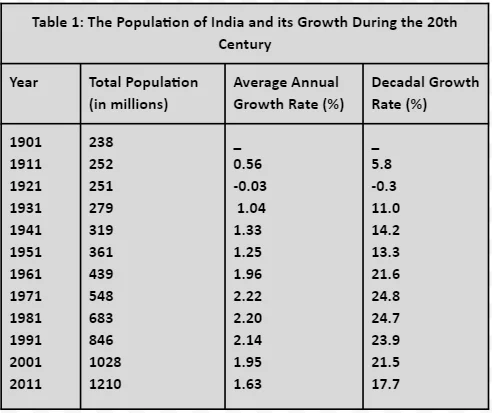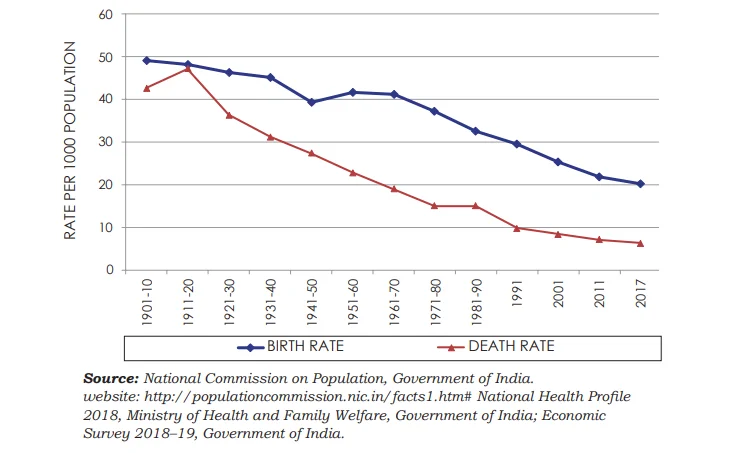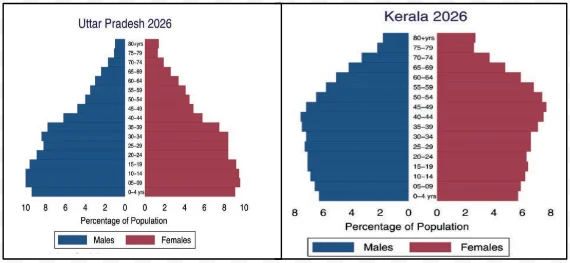![]() 12 Dec 2023
12 Dec 2023


Birth and Death Rate in India 1901-2017
|
Additional Information According to the Economic Survey 2018–19, India’s total birth rate was 22.4. Rural birth rate stands at 22.4 while urban birth rate was 17.3. |
|---|
|
|---|

Age Structure of the Indian Population: Trends and Projections


Age Group Pyramids, 1961, 1981, 2001 and 2026

Age Structure Pyramids, Kerala and Uttar Pradesh, 2026
<div class="new-fform">
</div>